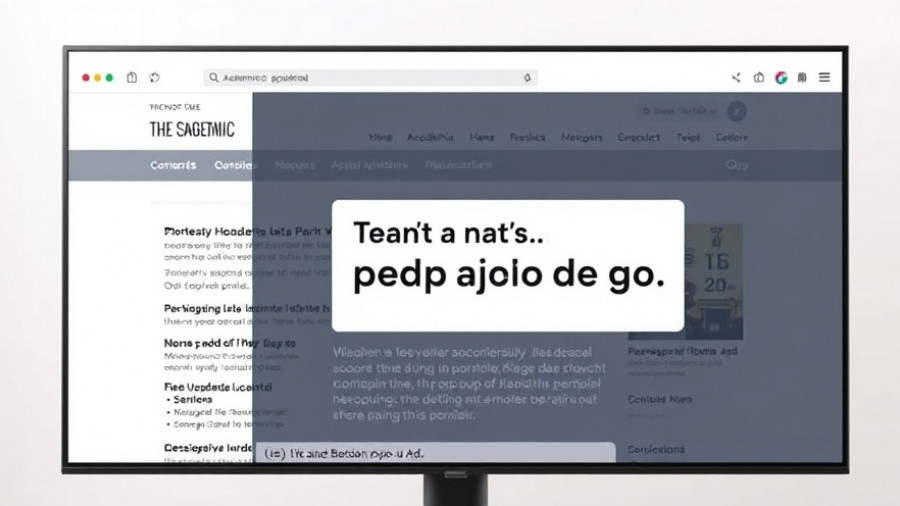
AI's New Role in Government Operations: What This Means
The recent deal between Microsoft and the U.S. government to integrate Copilot AI features into Office 365 represents a significant leap into the realm of artificial intelligence for federal agencies. Satya Nadella, Microsoft’s CEO, proclaimed that the move promises to modernize governmental systems, streamline workflows, and potentially save billions of taxpayers' dollars. This major collaboration is not just about improving office productivity; it suggests a broader initiative to incorporate advanced technology in public services, highlighting how AI can enhance transparency, efficiency, and responsiveness.
Understanding Copilot AI and Its Features
Microsoft’s Copilot AI acts as an intelligent assistant, bringing a host of upgraded functionalities to classic applications, such as Word and PowerPoint. By leveraging machine learning and advanced natural language processing, Copilot assists users in drafting documents, crafting presentations, and managing data more intuitively. The irony here is that while these features could make everyday tasks simpler for government employees, the integration of AI also raises questions about job impacts—will automation threaten jobs, or can it be used to augment human capabilities within federal agency operations?
Historical Context: Microsoft's Long-standing Partnership with the Government
This deal is just the latest chapter in a long history of Microsoft working with the U.S. government. Over the past four decades, Microsoft has taken part in various initiatives aimed at enhancing public service delivery through technology. From improving IT infrastructure to supporting cybersecurity frameworks, this partnership has always aimed at innovation and efficiency. Thus, Copilot's introduction can be seen as an evolution reflecting the government's need to adapt to rapidly changing technological landscapes.
Economic Implications of AI in Government
Nadella's claim of saving $3 billion in the first year highlights not only the financial advantages but also the promise of a more streamlined governance model. AI integration could mean reduced operational costs and improved service delivery, freeing up resources for other crucial areas in government spending. However, there is always a risk associated with such technology adoption; if not implemented properly, it could lead to significant expenditure not only in financial terms but also in the public trust domain.
Potential Challenges Ahead: The Ethical Use of AI
While the benefits of AI are compelling, they are accompanied by several ethical challenges. Public sector deployment of AI must ensure that systems are transparent and that the data used by Copilot is responsibly managed. Furthermore, maintaining the public's trust is crucial—will citizens be comfortable with AI-driven decisions impacting their lives, especially regarding sensitive information? The government must navigate these waters carefully, establishing guidelines and frameworks to govern AI use effectively.
Insights for the Future: A Roadmap for AI in Public Sector
As Microsoft invests an ambitious $80 billion in AI this year, the implications for the future are substantial. This deal shows that we may face an increasingly Ai-centric government, where bureaucratic processes are not just streamlined but transformed. The integration of AI tools like Copilot could embolden future innovation efforts within government agencies, paving the way for AI-powered data analysis, predictive modeling for public policy, and enhanced citizen engagement systems.
Citizens can look forward to more efficient government services if this evolution succeeds. However, for AI to provide its anticipated benefits, the emphasis on training and adapting the workforce is just as critical as the technology's implementation itself. As federal agencies embrace these changes, there is an opportunity for industry players to also learn from the government’s initiatives and perhaps even partner in driving AI growth in various sectors.
 Add Row
Add Row  Add
Add 




Write A Comment